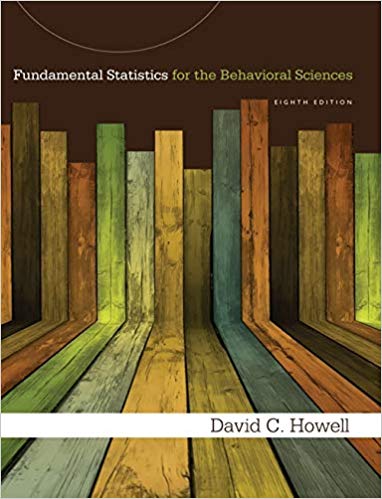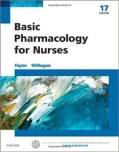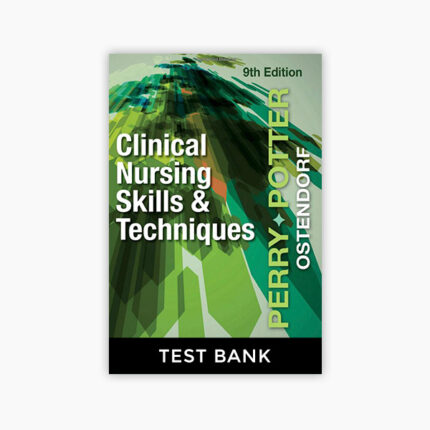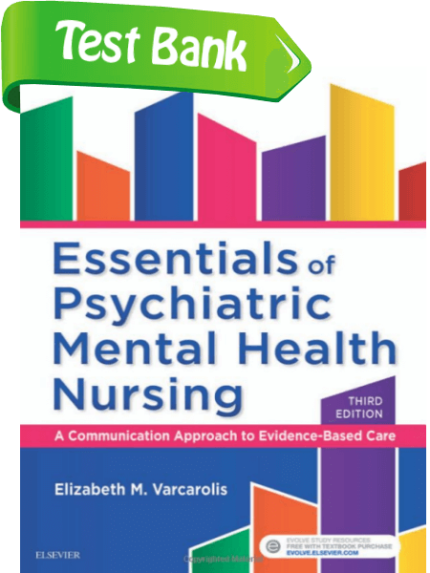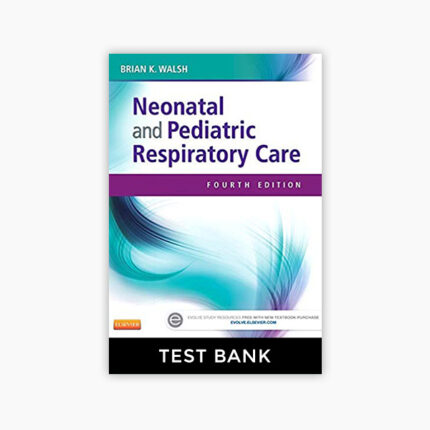Test Bank For Fundamentals Nursing Active Learning 1st Edition Yoost Crawford
Chapter 01: Nursing, Theory, and Professional Practice
MULTIPLE CHOICE
- A group of students are discussing the impact of non-nursing theories in clinical practice. The students would be correct if they chose which theory to prioritize patient care?
| a. | Erikson’s Psychosocial Theory |
| b. | Paul’s Critical Thinking Theory |
| c. | Maslow’s Hierarchy of Needs |
| d. | Rosenstock’s Health Belief Model |
ANS: C
Maslow’s hierarchy of needs specifies the psychological and physiologic factors that affect each person’s physical and mental health. The nurse’s understanding of these factors helps with formulating nursing diagnoses that address the patient’s needs and values to prioritize care. Erikson’s Psychosocial Theory of Development and Socialization is based on individuals’ interacting and learning about their world. Nurses use concepts of developmental theory to critically think in providing care for their patients at various stages of their lives. Rosenstock (1974) developed the psychological Health Belief Model. The model addresses possible reasons for why a patient may not comply with recommended health promotion behaviors. This model is especially useful to nurses as they educate patients.
DIF: Remembering REF: p. 8 | pp. 10-11
OBJ: 1.4 TOP: Planning
MSC: NCLEX Client Needs Category: Safe and Effective Care Environment: Management of Care
NOT: Concepts: Care Coordination
- A nursing student is preparing study notes from a recent lecture in nursing history. The student would credit Florence Nightingale for which definition of nursing?
| a. | The imbalance between the patient and the environment decreases the capacity for health. |
| b. | The nurse needs to focus on interpersonal processes between nurse and patient. |
| c. | The nurse assists the patient with essential functions toward independence. |
| d. | Human beings are interacting in continuous motion as energy fields. |
ANS: A
Florence Nightingale’s (1860) concept of the environment emphasized prevention and clean air, water, and housing. This theory states that the imbalance between the patient and the environment decreases the capacity for health and does not allow for conservation of energy. Hildegard Peplau (1952) focused on the roles played by the nurse and the interpersonal process between a nurse and a patient. Virginia Henderson described the nurse’s role as substitutive (doing for the person), supplementary (helping the person), or complementary (working with the person), with the ultimate goal of independence for the patient. Martha Rogers (1970) developed the Science of Unitary Human Beings. She stated that human beings and their environments are interacting in continuous motion as infinite energy fields.
DIF: Understanding REF: p. 7 OBJ: 1.1
TOP: Planning MSC: NCLEX Client Needs Category: Health Promotion and Maintenance
NOT: Concepts: Health Promotion
- Which nurse established the American Red Cross during the Civil War?
| a. | Dorothea Dix |
| b. | Linda Richards |
| c. | Lena Higbee |
| d. | Clara Barton |
ANS: D
Clara Barton practiced nursing in the Civil War and established the American Red Cross. Dorothea Dix was the head of the U.S. Sanitary Commission, which was a forerunner of the Army Nurse Corps. Linda Richards was America’s first trained nurse, graduating from Boston’s Women’s Hospital in 1873, and Lena Higbee, superintendent of the U.S. Navy Nurse Corps, was awarded the Navy Cross in 1918.
DIF: Remembering REF: p. 5 OBJ: 1.3
TOP: Assessment MSC: NCLEX Client Needs Category: Health Promotion and Maintenance
NOT: Concepts: Professionalism


